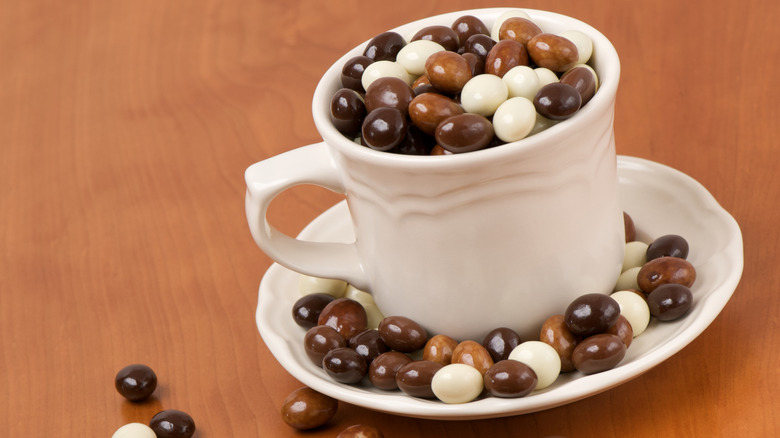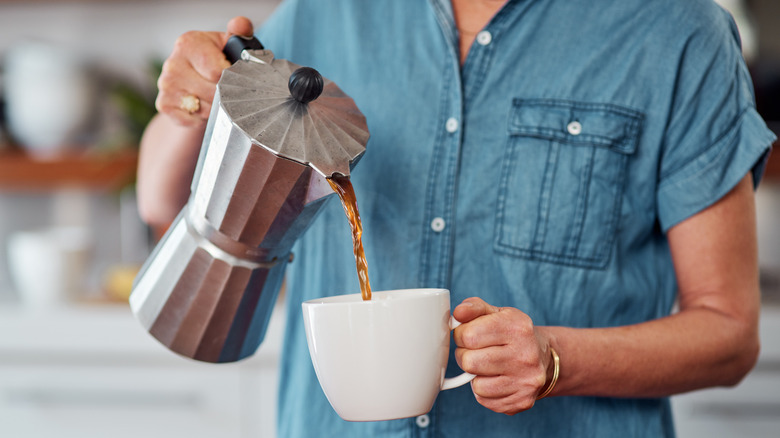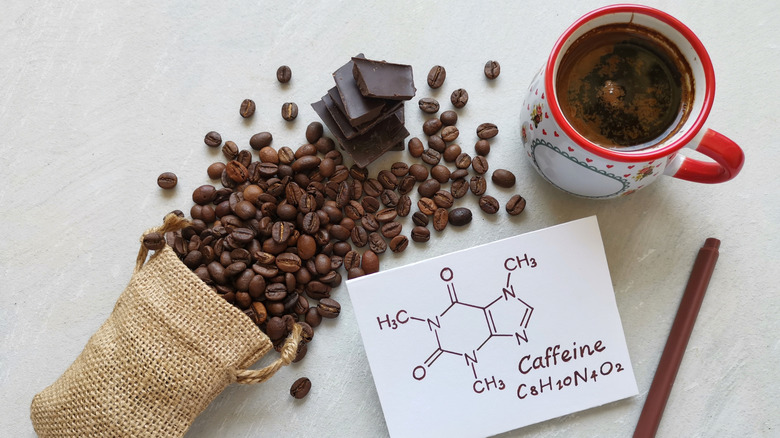Do Chocolate-Covered Espresso Beans Have More Caffeine Than Coffee?
For many people, caffeine is about as vital to their daily functioning as food, water, and oxygen. There are plenty of ways to get your daily dose, from energy drinks and supplements to an old-fashioned drip coffee. One of the most delicious (but often overlooked) sources is the coffee bean itself in chocolate-covered espresso form. It's easy to understand that eating these beans directly will provide a notable energy boost. But how does it compare to your usual cup of coffee? While the beans can pack a punch, their overall effect depends on a few factors.
First, it's vital to understand exactly how much caffeine is present in each chocolate-covered espresso bean. When it comes to the beans themselves, estimates vary from as low as two milligrams of caffeine each to a dozen or more. The chocolate also adds a small amount of extra caffeine — up to 20 milligrams per 30-gram serving of dark chocolate, although milk chocolate has substantially less. This might not mean much for a single bean, but it can add an extra boost if several are consumed. Overall, it's safe to estimate that each chocolate-covered espresso bean contains roughly five to seven milligrams of caffeine.
Different coffees, different serving sizes
In comparison, it's important to remember that all coffee is not created equal when it comes to caffeine. An eight-ounce serving of brewed coffee can span a wide range of as little as 95 or as much as 200 milligrams of caffeine. Meanwhile, a typical one-ounce shot of espresso packs around 60 to 75 milligrams in a far more compact size, with twice that amount in a double shot.
With these numbers in mind, it's clear that the answer to whether chocolate-covered espresso beans have more caffeine than coffee comes down to how many beans you're eating in a single sitting. To equal a single shot of espresso, you'd need to eat roughly nine to 13 espresso beans. For a typical cup of coffee, this range rises to 18 to 25 beans.
Based on a typical serving size, this latter number is generally right around the number suggested for a single serving. Therefore, it's hard to say for sure whether the beans or regular coffee packs more of a caffeine punch, with so much depending on the profile of the individual beans and the coffee they're being compared to. However, it's generally safe to say a serving of chocolate-covered espresso beans packs a notably higher caffeine content than a single espresso shot.
Other chocolate-covered considerations
Although chocolate-covered espresso beans undoubtedly are quicker, more portable, and more convenient than even the simplest instant coffee, they don't come without some potential downsides as well. Chocolate can include a substantial amount of calories: around 150 per ounce for dark chocolate and milk chocolate. In comparison, black coffee has essentially no calories at all, though this can quickly change with the inclusion of such add-ins as sugar, milk, and creamer. Espresso beans are also so easy to consume quickly that you may over-caffeinate yourself, which can be bad for you, resulting in such issues as headaches and elevated blood pressure.
Chocolate-covered espresso beans make an excellent occasional snack or complementary garnish for a sophisticated dessert or drink. However, those looking to chocolate-covered espresso for caffeine need to use caution and product read labels carefully. Caffeine content can vary widely, even with the difference of just a few beans.


